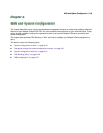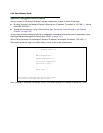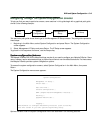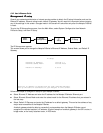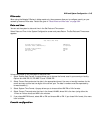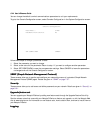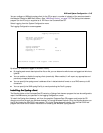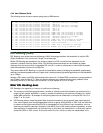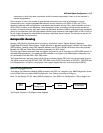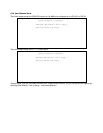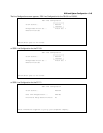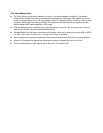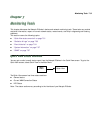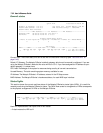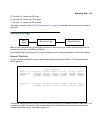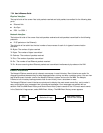
WAN and System Configuration 6-47
same order in which they were transmitted, and the reconstructed packet is sent on to the recipient’s
networking equipment.
From the point of view of the routers or other devices connected to the inverse multiplexers, they are
communicating via a single high-speed WAN channel at some multiple of the SDSL or IDSL rate. This is
especially important when an application’s bandwidth requirements are high. But a high bandwidth service is
either difficult to obtain or too expensive. Some examples include: a university offering remote educational
services, or distance learning, may require very high bandwidth across the WAN in order to maintain acceptable
quality for its classroom video. Bringing together relatively less expensive, lower speed SDSL or IDSL circuits to
form a single high-speed link often saves a company a significant amount money. The savings can pay for the
inverse multiplexer in a few months.
NN
NN
ee
ee
tt
tt
oo
oo
pp
pp
ii
ii
aa
aa
DD
DD
SS
SS
LL
LL
BB
BB
oo
oo
nn
nn
dd
dd
ii
ii
nn
nn
gg
gg
Netopia’s DSL Bonding implementation is based on a technique used in Copper Mountain Networks
CopperEdge DSL Access Concentrators. Copper Mountain’s approach conforms with the Multi-link Frame Relay
(MFR) protocol. However, where DML operates between the CPE and DSLAM, MFR would more likely operate
between the CPE and Frame Relay terminator (potentially the ISP’s router).
Currently, the D-Series equipment does not support the potential use of more than one ISDN U-BRI channel for
switched ISDN applications – the additional BRIs available on a single or dual WAN module configuration can
only be bonded to the first BRI in IDSL DML mode.
The Copper Mountain approach allows the bonding of multiple physical DSL links into a single logical channel.
The logical channel may use RFC1483 FUNI, RFC1490 and/or Q.922 Frame Relay, or RFC1661/1662 PPP data
link encapsulations. In addition, the physical links support Copper Mountain’s control protocol (CMCP).
WW
WW
AA
AA
NN
NN
cc
cc
oo
oo
nn
nn
ff
ff
ii
ii
gg
gg
uu
uu
rr
rr
aa
aa
tt
tt
ii
ii
oo
oo
nn
nn
To configure your Wide Area Network (WAN) connection and DSL link, navigate to the WAN Configuration screen
from the Main Menu and select WAN Configuration, then Choose Interface to Configure.
Note: On the Netopia D7100, select WAN Configuration, then SDSL Line Configuration. Skip to page 6-49.
The Choose Interface to Configure screen appears.
Main
Menu
WAN
Configuration
Choose Interface
to Configure
WAN
Setup



